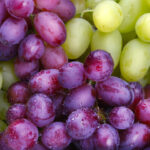Contrasting outlooks for different Chilean citrus fruits

The latest SHAFFE-FRESHFEL forecast predicts a slight downturn in production and exports for Chilean citrus this season, with the exception of a 5% rise in orange shipments. To hear more about the upcoming deal, www.freshfruitportal.com spoke with two citrus exporters from the South American country with contrasting situations. 
For Gesex citrus program manager Jorge Marin, this year's citrus outlook varies widely depending on the fruit type; for some production could be up but with shipments down, while for others the international market simply can't get enough.
First up will be the lemon deal with the harvest starting next week for Marin's company, with an earlier season and a greater emphasis on later varieties like Messina.
"In terms of lemons we’re seeing production will be similar to last year, but I think we will see a drop in exports as it is not predicted to be a good year in the United States market," he says.
"We’re seeing earlier production this year than in previous years from the V to VII regions. We’re going to start harvesting next week whereas last year we began around May 15.
"Argentina will always be a threat with the volumes it has, but we will continue to strengthen niches that we have in Europe in different types of retail."
He highlights oranges are Gesex's main citrus export with 400,000 boxes shipped last year, and depending on how markets go this figure could be anywhere between 350,000-400,000 boxes.
"I’d say Chilean production will be higher than last year – we will send less because we want to put the brakes on the amount of fruit that was sent last year, which was not a good year for oranges in the U.S. We were making around 10-15 cents less per kilo.
"Orange sizes are smaller than last year. Last year we had a 48-74 count but now I expect we’ll have a 64-88 count, so that’s a lot smaller.
In terms of varieties, he expects there will be at least 10% more Fukumotos, while late Lane volumes will probably be equal or less.
He says South Africa competed well in oranges last year, while Australia was not much of a concern as it focused on different market segments.
"The competition with South Africa is strong, in terms of volume and especially in terms of quality. Last year the quality of South African oranges was to superior to Chile’s oranges.
"The competition is not so much with Australia as they go to better niches because their fruit has higher brix, and the volumes are not so large. Australia goes more to Japan because of its advantages in brix and freight."
Marin is expecting significant growth of around 40% for mandarins.
"For W. Murcott I think there will be higher production than last year, not because of climatic reasons but because of the new orchards in production. I don’t think there will be any less than 20% growth nationally," he says.
"The markets are very good. We’ve had four years of being higher against the dollar but returns have been good. There is a strong demand for this product and sizes are very similar to last year.
"We’re going towards the late mandarins because they arrive in time for the start of school in the Northern Hemisphere. Chile’s mandarins are easy for kids, they’re convenient, and not only do they have good brix but they have excellent color."
He says the company intends to pay a one-off royalty fee this year to expand its mandarin exports to the European market, with an expected payment of around €1,100 (US$1,453) per hectare.
He says Gesex doesn't have particularly high volumes of clementines, but notes drought conditions in the key northern growing region have set back production. This is the same reality cited by Atunguayco's Lorena Rojas.
"For clementines we will have 20% less, just because of the issue of size and a lack of water. For oranges we will have 50% because we’ve cut out 15ha from the 30ha we used to have," she says
"We got rid of hectares because of the lack of water, so we’d have more water to irrigate the clementines which are more profitable than oranges.
"In clementines we are expecting 1,800 (metric) tons, and for oranges we used to send 500,000 (metric) tons but now will have 250,000 (metric) tons."
She says the situation in the area around Ovalle has become very complicated due to the lack of water, currency difficulties and shortage of labor.

















































